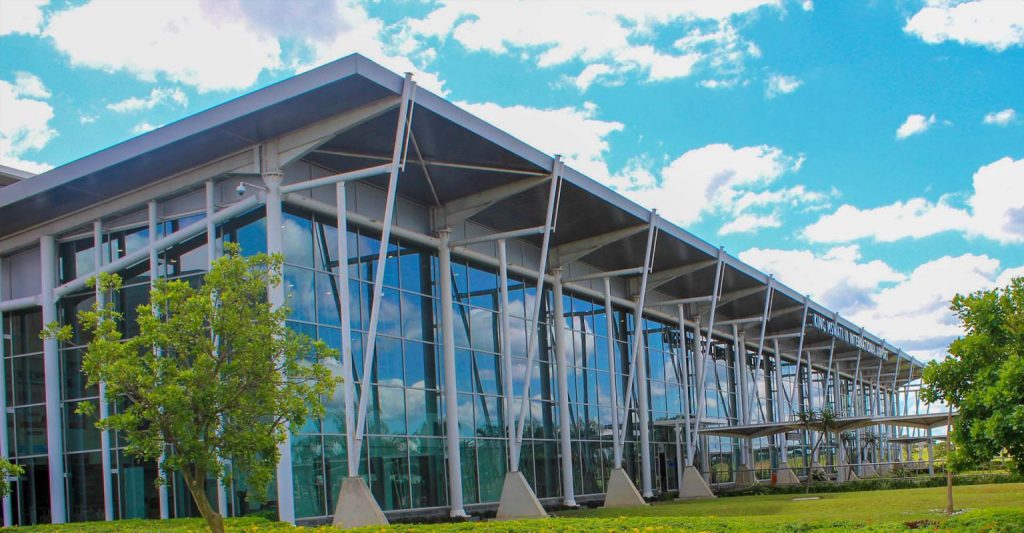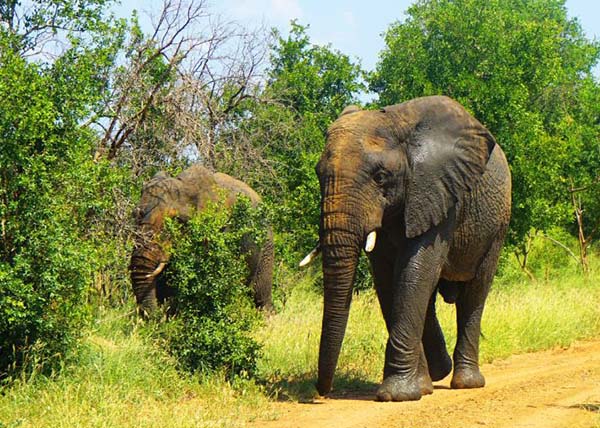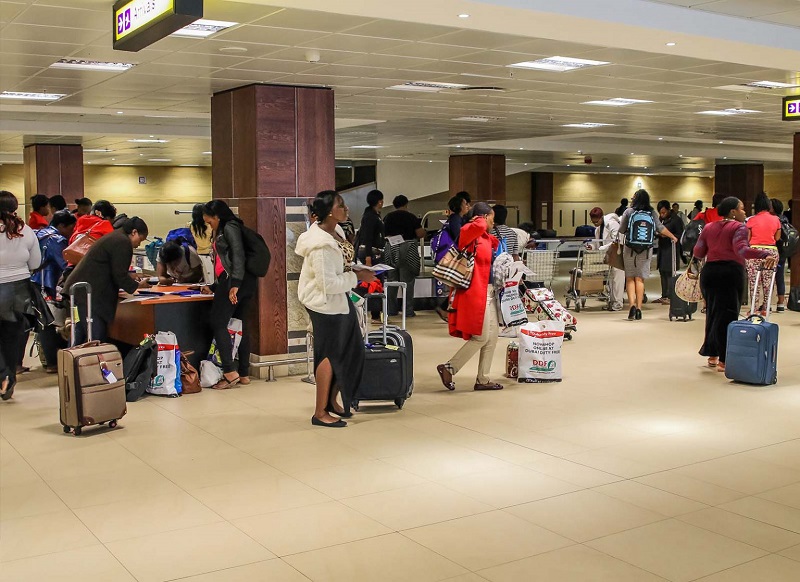By Roland Ohaeri
The Southern African State of Eswatini offers remarkable tourism and business potential and sees itself as an emerging aviation hub in Africa. Powering up its aviation and tourism infrastructure, Eswatini is making bold commitments and impact in Africa’s aviation industry. Ms. Andile Mtetwa-Amaeshi is the Director General of the Eswatini Civil Aviation Authority (ESWACAA) and CEO of Airports under ESWACAA, and served as Vice-President Southern Africa Region of the African Civil Aviation Commission (AFCAC). In this exclusive interview with Roland Ohaeri, she discloses more of the evolution and opportunities in the civil aviation industry in Eswatini, amidst the phenomenal emergence of the Single African Air Transport Market (SAATM).
Q: Eswatini is emerging as one of Africa’s civil aviation industries with interesting potential, how would you describe your experience so far leading Eswatini’s Civil Aviation Authority?
A: Leading Eswatini’s Civil Aviation Authority has been an incredibly rewarding experience. Playing an active role in ensuring the growth and development of Eswatini’s Aviation sector has been particularly gratifying. In the terms that I have served significant strides have been made in enhancing the State’s safety standards, diversifying the airline industry and increasing air travel in Eswatini.
Some of the key highlights of my tenure include safety improvements. We have implemented rigorous safety regulations and oversight mechanisms to ensure that Eswatini’s aviation sector meets international standards. This has boosted our reputation and confidence among both domestic and international travellers.
In industry diversification, we have successfully issued an Airline Operator License (AOL) in my tenure and reintroduced the national carrier to Emaswati. This has expanded Eswatini’s route network, diversified the industry, and in effect, contributed to increased tourism activity and economic growth.
In talent development, we have prioritized the development of local aviation talent through training programs and partnerships with international aviation organizations. This has helped to build a skilled and capable workforce.
While we have made significant progress, there is still much to be done. We are committed to continuing our efforts to position Eswatini as a leading aviation hub in Africa. By focusing on safety, efficiency, and sustainable growth, we believe that we can achieve our goals and contribute to the overall development of our country.
Q: The Second Meeting of Africa’s Directors General of Civil Aviation held recently in Arusha, Tanzania, called for States to fast-track the implementation of the Single African Air Transport Market (SAATM), how is Eswatini boosting SAATM especially regarding harmonization of aviation regulation and 5th Freedom airline operations?
A: The Kingdom of Eswatini is one of the 37 African States who subscribed to the SAATM solemn commitment. ESWACAA has reviewed all Bilateral Air Service Agreements (BASA) that were signed before the signing of solemn commitment to be aligned with SAATM objectives which include 5th Freedom airline operations. The process of BASA review is ongoing to cover all 37 African States.
Q: Safety, as aviation’s number 1 priority, has continued to improve in Africa; could you describe your efforts to drive aviation safety and security in Eswatini?
A: Various efforts have been made by the Authority to drive aviation safety and security especially at King Mswati III International Airport. This includes, but is not limited to the establishment of an Airport Facilitation Committee (AFC) to tackle efficiency concerns and improve both the passenger experience and cargo movement.
There is improved security screening technology; with the airport phasing out the use of single-view x-ray machines for the dual-view x-ray machines, and new x-ray machine also facilitates efficiency and effectiveness of detection.
Also, a draft cybersecurity strategy is being developed to address the evolving threats brought on by technological advancements. And the aviation industry, with a particular focus on airport operations, is prioritizing the development of a strong security culture.
Airport security personnel are kept abreast of the latest developments in the aviation industry through continuous training. Further, the Airport is conducting a wide range of risk assessments in order to mitigate security threats to aviation operations. Key personnel have been trained on the subject, risk assessments ongoing and a Security Risk Assessment register will be developed.

Q: You also double as the CEO of Airports under ESWACAA, how have you been able to manage the task of managing the CAA and the Airports?
A: Managing both the ESWACAA and the Airports under its purview has been a complex but rewarding endeavour. While the roles may seem disparate, they are fundamentally interconnected. The CAA ensures safety and efficiency in aviation operations, while the airports provide the physical infrastructure for these operations.
To effectively manage both entities, I have adopted a strategic approach that focuses on establishing distinct roles and responsibilities for each organization. This is essential and ensures that there is no overlap or conflict in decision-making. Building a capable and committed leadership team within both organizations is also crucial; while delegating tasks and empowering my team members allows me to focus on strategic oversight and problem-solving.
In addition, striving for continuous improvement in both organizations is essential. By regularly evaluating our performance and implementing best practices, we can enhance our efficiency and effectiveness.
Q: The Special Economic Zone (SEZ) was established to support the King Mswati III International Airport, how has this performed especially in enhancing air cargo at the KMIII Airport?
A: A plan has been developed to enhance air cargo, this includes the development of a Hanger Construction project that is targeted to begin in the near future.
Q: How would you describe air cargo facilities and activities at the Eswatini Airports, and what are your plans to boost cargo exports?
A: Eswatini’s airports, particularly King Mswati III International Airport, are equipped to handle cargo with facilities designed to manage both import and export shipments. The infrastructure includes cargo terminals, warehousing, and logistics support, though it may face limitations in capacity and technology compared to larger international hubs. To boost cargo exports, enhancing facilities with advanced tracking systems, increasing storage capabilities, and improving logistics services could be beneficial.
Q: Eswatini’s main gateway airport sits close to national parks which are exciting tourism spots, how do you hope to synergize aviation and tourism efforts to drive tourism and air transport in the region?
A: ESWACAA is a major stakeholder of Eswatini Tourism Authority (ETA) which regularly hosts round table discussions on how the Civil Aviation industry can assist them in their tourism efforts. To date, we have attended two crucial stakeholder meetings to articulate and map out various initiatives where the two entities can combine their efforts to offer packages that boost both air travel and tourism in the country and the region.

Q: How do you hope to attract more African and non-African airlines to Eswatini given the need to use aviation to drive investments and economic development in the State?
A: Attracting more airlines to Eswatini would call for the State to use strategies such as improving infrastructure like the airport facilities to accommodate more airlines and larger aircraft. Offering incentives such as reduced landing fees or tax breaks would attract airlines. Also, marketing and partnerships through promoting Eswatini as a gateway for regional and international travel, and forming partnerships with airlines to create attractive routes are important in this regard. Offering regulatory support in the form of simplifying regulatory processes to make it easier for airlines to operate in Eswatini is also key.
In addition, demonstrating the economic benefits of increased connectivity to potential airlines and showcasing how it can drive investment and tourism in the state is another strategy. By addressing these areas, Eswatini can enhance its attractiveness as a hub for both cargo and passenger airlines, contributing to broader economic development.
Q: You are one of Africa’s few female DGs of Civil Aviation Authorities, how have you been able to encourage increased female participation in aviation?
A: I have been actively involved in initiatives aimed at empowering young girls and fostering their interest in aviation. These initiatives have included school tours to all-girls institutions and participation in ICAO women’s empowerment programs.
Q: What excites you about the Eswatini aviation industry, and what do you hope to be achieved in the civil aviation industry in Eswatini over the next decade?

A: I am incredibly excited about the future of the Eswatini aviation industry. Our country has immense potential to become a regional aviation hub, and I am confident that we can achieve this goal through strategic planning and investment.

Some of the things that excite me about the Eswatini aviation industry include our growth potential. Our industry is poised for significant growth, driven by increased tourism, trade, and economic development. Also, Eswatini’s strategic location in Southern Africa makes it an ideal gateway to the region. Besides, we have a talented and dedicated aviation workforce that is capable of meeting the challenges of the industry.
Over the next decade, I hope to see several achievements in the Eswatini civil aviation industry including increased connectivity. We aim to expand our route network and connect Eswatini to more destinations worldwide. We plan to develop Eswatini as a regional cargo hub, attracting international freight carriers and boosting our economy. And we will strengthen our cooperation with neighboring countries to enhance regional aviation connectivity and promote economic integration.
By working together, we can create a thriving aviation industry that benefits Eswatini and the region as a whole.




